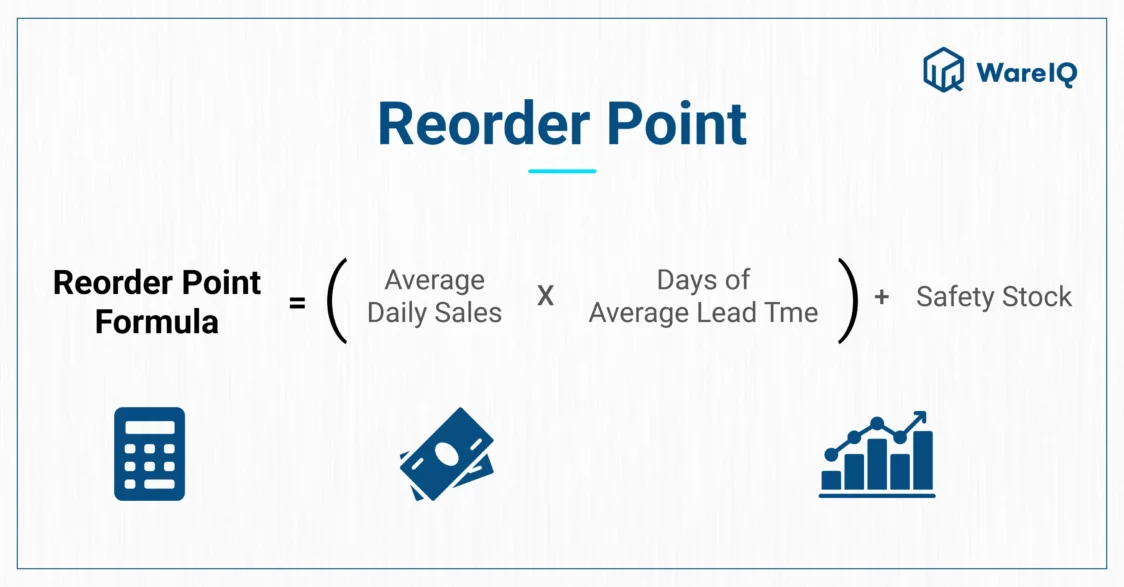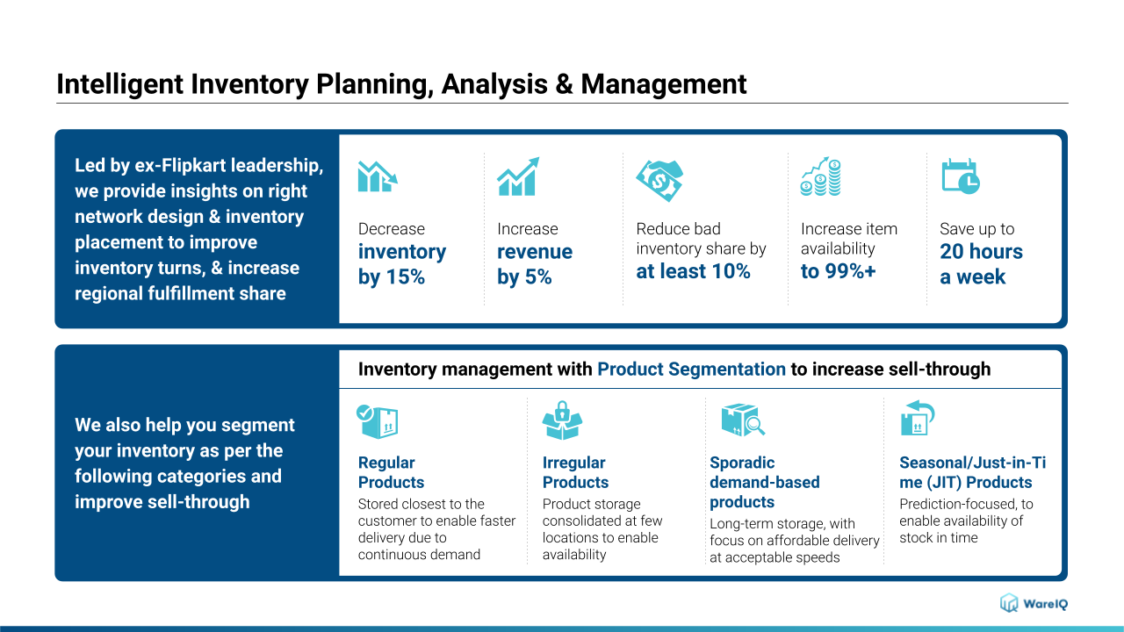Reorder Quantity Formula: Complete Guide Including Definition, Importance, and 3 Easy Steps to Calculate Reorder Quantity in 2024
The inventory of an eCommerce business is its most important asset and one of the most complex and crucial facets of operating an online store is inventory management. Additionally, it gets harder to keep track of stock levels with the more SKUs you have. Without effective inventory control, you can face situations such as overstocking products, which might expire or become outdated before you sell them and running out of stock, and losing clients and sales opportunities.
It takes the right balance to have the proper quantities of a product. The reorder quantity formula is used by eCommerce companies to calculate this. Generally, they use the economic order quantity (EOQ) formula to reduce the cost of transportation, warehousing space, stockouts, and overstocks so that they can determine the ideal order amount.
One of the best techniques to calculate the number of goods you need to purchase to maintain the proper stock levels is using the reorder quantity formula. Let us go into detail to understand what it entails.
- What is Reorder Quantity?
- 3 Easy Steps to Calculate Reorder Quantity Using the Reorder Quantity Formula
- Why is the Reorder Quantity Formula Important for 2023?
- Reorder Quantity vs Reorder Points
- Reorder Quantity VS Reorder Level: 4 Key Differences
- Helps to Avoid Stockouts
- Conclusion: How Does WareIQ Help eCommerce Firms to determine their Reorder Quantity Accurately?
- Reorder Quantity Formula: FAQs (Frequently Asked Questions)
What is Reorder Quantity?
Reorder quantity is the total amount of units of a product that you seek from a manufacturer or supplier for an inventory replenishment purchase order. The precise number shouldn’t be too high so that you have too much capital invested in inventory and subsequent increased storage costs but it also shouldn’t be too low so that there isn’t enough safety stock and you have the danger of running out of inventory before you can order the next batch.
The ordered amount or number of units must be optimal while taking into account a variety of elements, including the cost of the order, the cost of transportation, the cost of transporting the order, etc. The reorder quantity strikes the best balance between a number of variables, including quantity discounts, freight, storage expenses, and the need for working capital.
WareIQ, an eCommerce fulfillment company, empowers online brands with a superior-tech platform to compete with Amazon like service levels by bringing their average delivery timelines from 5-10 days to 1-2 days.
3 Easy Steps to Calculate Reorder Quantity Using the Reorder Quantity Formula

Determine Average Daily Usage
Average daily use refers to the number of your product’s units that are sold each day. Usually, thirty days is a common timeframe but it changes during different seasons or festivals. For instance, if you need to place an order for a product before a festival, your ADU should be determined using that festival’s ADU from the previous year.
Calculate Average Lead Time
Average lead time refers to the time span between when a supplier receives a purchase order and when they deliver it to the seller’s warehouse or fulfillment center. The average lead time is calculated in days.
If you reordered inventory on 1st January, your average lead time is 30 days if it is available to be used to fulfill customer orders by 30th January.
Calculate the Reorder Quantity
You can determine how much inventory you need to reorder by multiplying average daily use (ADU) and average lead time (ALT). Let’s have a look at how to determine the reorder amount for a specific product:
-ADU is 25
-ALT is 30 days
Your reorder quantity using the reorder quantity formula will be:
=ADU X ALT
=25 X 30
=750
Recalculating your reorder quantity frequently is advised, especially as your order volume rises and if you sell seasonal items.
When the reorder level is determined properly, replenishment stock should arrive immediately before the number of units of the existing stock drops to zero.
Why is the Reorder Quantity Formula Important for 2023?

Helps to Avoid Stockouts
Lost sales result from low inventory. Backorders and split shipments are always an option, but they don’t provide a seamless consumer experience.
Reorder quantity allows you to order just enough to fulfill orders until your next purchase, while reorder level allows you to secure a recovery in time before your inventory runs out and helps handle stockout.
Assists in Minimizing Expenses
Additionally, you should avoid overstocking your inventory which will ultimately block your capital. You will need to expand your warehousing storage capacity or opt for storing items in multiple warehouses if your stock levels are too high.
By estimating reorder quantity, you will be able to maintain just the right amount of inventory which will result in lower storage costs, less wastage, and fewer operational costs.
Helps in Managing Inventory
You can set up notifications in your inventory management system, allow live inventory tracking, and manage changes in demand over time when you know precisely how much to reorder and when you need to replenish by using the reorder quantity formula to calculate the reorder quantity you need.
Example of Calculating Reorder Quantity
You don’t require reorder quantity calculator always, just using the 3-steps mentioned before we can calculate reorder quantity in a minute. To calculate your reorder level, multiply your average usage rate by the lead time for an inventory item.
Be diligent while entering the time values you are using. If you are calculating average daily usage then put the lead time value in days.
Suppose, Rajesh experiences an average daily sale of his items as 2500 units and the lead time for producing new units is 7 days, the re-order level will be:
2500 units x 7 days = 1,75,000 units.
When the inventory level of items is left at 1,75,000 units in stock, Rajesh needs to reorder and stock more units. By the lead time the additional units arrive in 7 days, the on-hand inventory balance may have reduced to zero.
Reorder Quantity vs Reorder Points
Reorder Quantity and Reorder Point are two essential concepts in inventory management. They help businesses maintain an optimal level of stock and avoid stockouts or excess inventory.
Reorder Quantity (ROQ) refers to the amount of inventory that should be ordered each time a replenishment order is placed. It is typically calculated by considering factors such as demand rate, lead time, and desired safety stock level. The goal of determining the reorder quantity is to balance the costs associated with ordering and holding inventory.
On the other hand, the Reorder Point (ROP) is the level of inventory at which a replenishment order should be placed to avoid stockouts. When the inventory level reaches the reorder point, a new order should be placed to ensure that stock arrives before running out of inventory.
While the Reorder Quantity determines the amount to order, the Reorder Point indicates when to place the order. These two concepts work together to ensure a smooth and efficient inventory management process.
Reorder Quantity VS Reorder Level: 4 Key Differences
Differences Between Reorder Quantity and Reorder Level are listed down here;
Comparison Chart
| Basis for Comparison | Reorder Level | Reorder Quantity |
|---|---|---|
| Definition | Reorder level refers to the quantity at which new orders should be made in order to replenish inventory. | When the stock of a product drops to reorder level, the re-order quantity refers to the size of the order which is placed to replenish it. |
| What it Defines | Time | Quantity |
| What it Determines | Material purchase time | Quantity of that material |
| Involved Factors | The maximum consumption during lead time, the supplier's lead time, the safety level and the replenishment period, etc. | The amount of discounts available, the annual carrying cost, etc. |
We Hope, this table of reorder quantity vs reorder level made the concept clear.
Helps to Avoid Stockouts
Lost sales result from low inventory. Backorders and split shipments are always an option, but they don’t provide a seamless consumer experience.
Reorder quantity allows you to order just enough to fulfil orders until your next purchase, while reorder level allows you to secure a recovery in time before your inventory runs out and helps handle stockout. The latter is calculated using the reorder point formula.
Conclusion: How Does WareIQ Help eCommerce Firms to determine their Reorder Quantity Accurately?
For an eCommerce business to be managed successfully, knowing how much inventory to repurchase is the most important question to answer. With the help of the reorder quantity formula, you know that your incoming and outbound logistical workflows are being improved by ordering the proper quantity of goods.

With the help of WareIQ, eCommerce businesses can manage inventory, forecast demand, pack orders, lower shipping costs, and fulfill customer expectations. We will optimize your data in real-time, automate your reordering quantity and move your inventory to relevant warehouses that are nearest to high-demand locations and transportation hubs if you choose us to store goods in our fulfillment centers.
WareIQ helps brands improve their shipping strategy with a nationwide network of fulfillment facilities and technology that is integrated with the leading eCommerce platforms.










